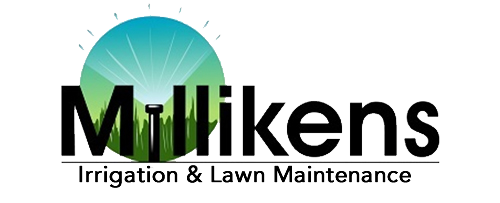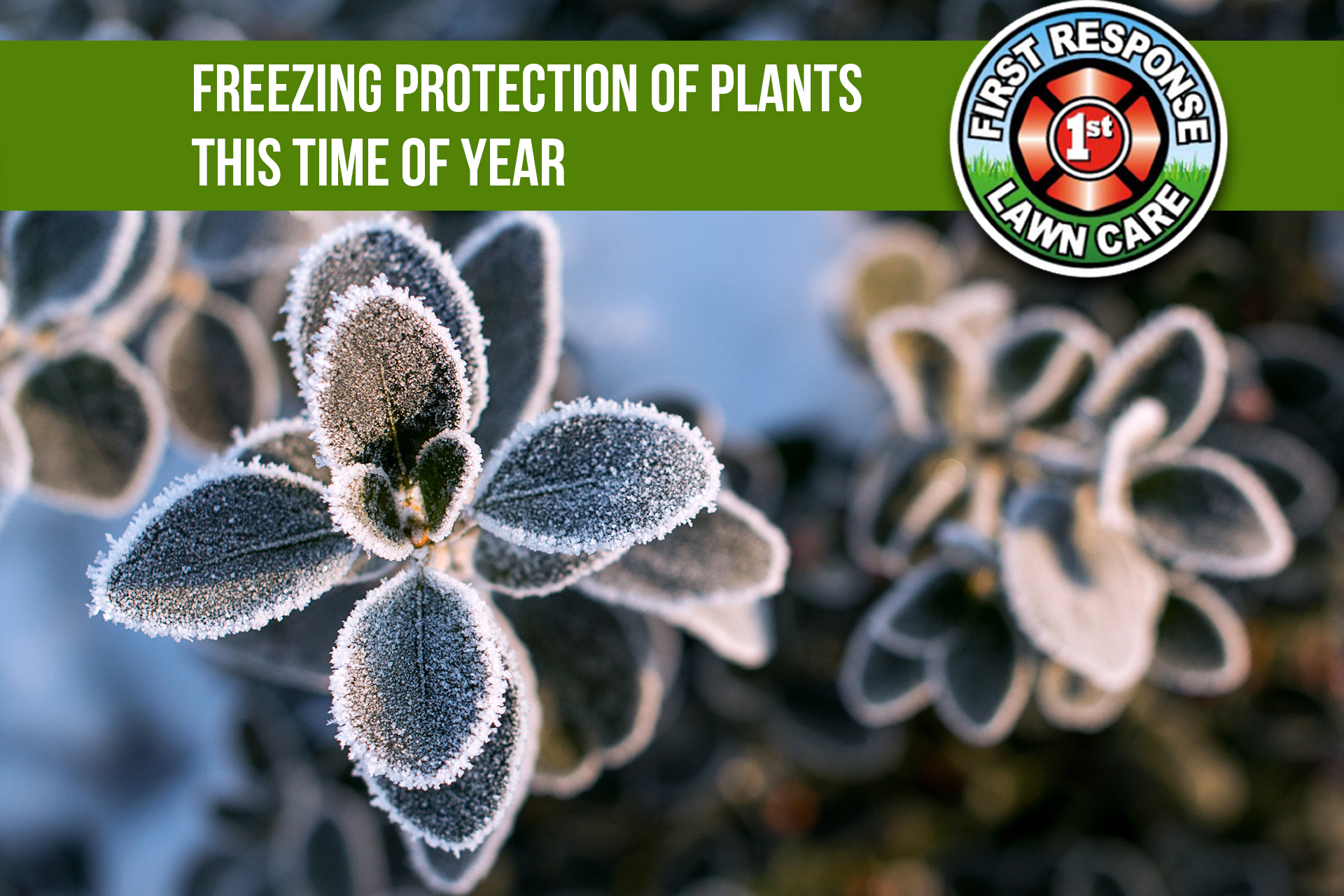
by admin | Jan 18, 2019 | Lawn Care Royse City, Winterizing, Winterizing Your Lawn
Winter is upon us and freezing protection of plants this time of year should be a concern for light snowfall seasons. One day it’s 60° and mild, the next 30°F with snow on the ground. You know what they say about Texas, “If you don’t like the weather, stick around because it will change by tomorrow”.
Frost, freezing and root damage are cause for concern in January. When frost is predicted, you can prepare for it. It’s also a good idea to periodically check the temperature at ground level near your plants to see how cold it is for them and whether or not you need to take precautions.
The primary concern being frost and light snow right now means that there are several things you might want to think about this month.
- If you’re going to cover up your plants before a frost, do so before sunset. If you wait until darkness falls, most of the stored heat in your garden will have dissipated.
- No matter what type of cover you use, make sure that it extends down to the soil on each side.
- Do not leave any openings for warmth to escape. If you can, it’s also helpful to use stakes to keep material, especially plastic, from touching the plant itself.
- In the morning, after frost has thawed, remove covers. Not doing so could cause the plant to come out of dormancy and start growing which makes more susceptible to frost damage in the future.
A few ideas for items you can use to cover plants:
- bed sheets or blankets
- drop cloths
- an inverted flower pot or bucket
- milk jugs with the bottom cut out
- frost cloths (These can protect some plants to temperatures as low as 20°F.)
- garden blankets from your local hardware store
Remember that covers don’t have to be costly to be effective and a little bit of caution goes a long way in protecting your plants against winter weather.
Contact First Response Lawn Care Today! and ask about our expert advice and services.
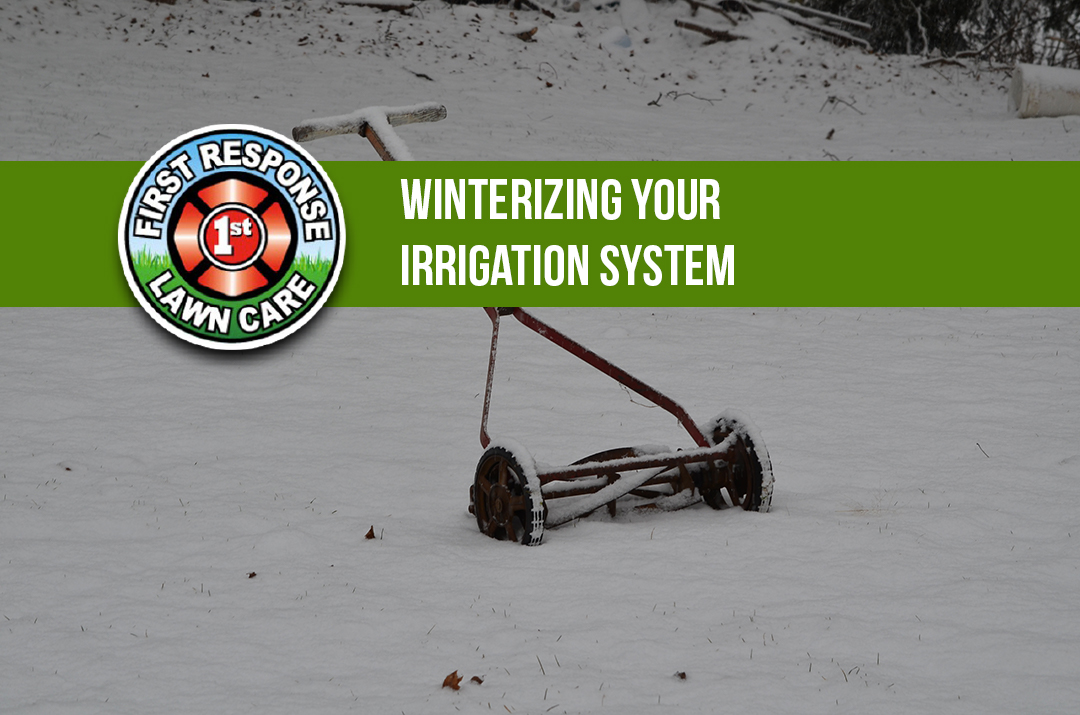
by admin | Jan 11, 2019 | Irrigation Rockwall, Lawn Care Royse City, Winterizing Your Lawn
Wintertime can be hard on your sprinkler system. In Texas, winter weather related damage, can have a lasting effect on watering systems. The freeze/thaw cycle in the winter months can damage pipes and create leakage issues you might not know are there until your next water bill.
Follow these easy steps to help minimize the chance for winter lawn irrigation problems in the coming Spring.
- Turn off the water main to the irrigation system itself.
- Set your irrigation controller to the “rain” or “off” setting.
- Turn on each valve manually to release pressure in the pipes.
- Drain water out of irrigation components that might freeze. (This is usually done at the lowest elevation point or sprinkler head of the system.)
Above ground piping will need additional TLC such as insulation of the system components that are susceptible to to freezing. Using heat trace tape designed to keep the pipes warm during colder temperatures can keep these parts free of problems later on.
Questions? Contact First Response Lawn Care irrigation specialists by clicking the link below to ask about our expert irrigation services.
Contact First Response Lawn Care Today!
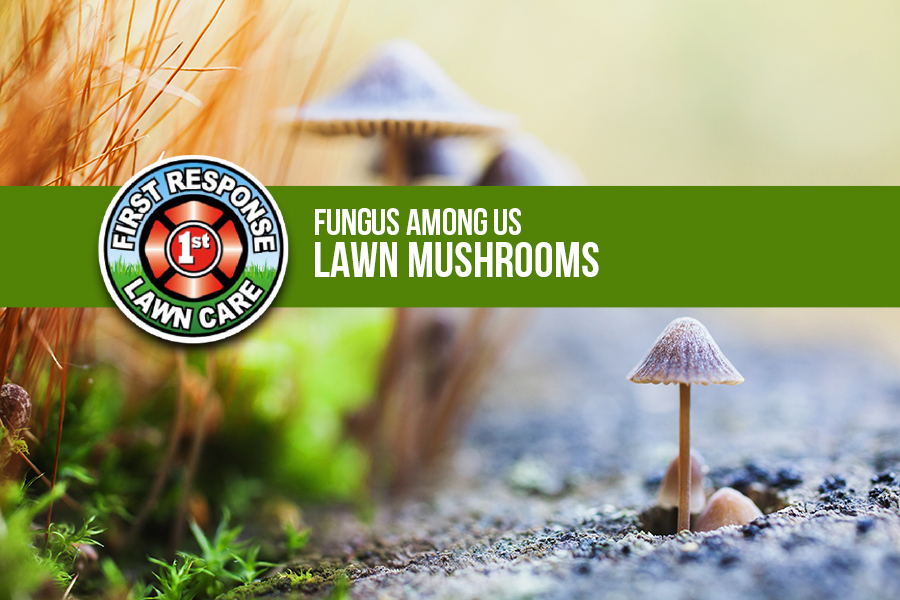
by admin | Jul 21, 2017 | Aeration, Lawn Aeration Rockwall, Lawn Care Royse City
Mushrooms are actually part of a fungus that grows underground, hidden from sight. Lawn fungi and their mushrooms don’t harm a lawn. They’re actually good guys in the ecosystem of your yard, breaking down organic material into nutrients your lawn can use. When most people hear the word “mushroom,” they think of the typical umbrella-shaped one, which is sometimes called a toadstool. Common names for lawn fungus, include puffball, shaggy mane, Japanese parasol or the oddly shaped and smelly stinkhorn.
Common Causes and Solutions
Fungi living beneath lawns are usually long-lived organisms that produce mushrooms when conditions are right. The top reasons mushrooms occur are buried organic matter, high moisture and low light.
Cause: Buried organic matter
A fungus grows by breaking down organic matter. In a lawn, that organic material could be buried timber, a stump, or tree or shrub roots that remain underground after plants have been removed.
Sometimes you can hasten the material’s breakdown by applying nitrogen fertilizer. Use a readily available nitrogen source, not a slow-release one. Aim for a rate of 1/2 to 3/4 pound of actual nitrogen per 1,000 square feet of lawn. If you don’t mind disturbing your lawn, you can also try digging up the organic material.
Cause: High moisture
Periods of prolonged rain can coax mushrooms to form, as can overwatering a lawn. Heavily compacted soil and a thick thatch layer can create drainage problems, which provide ideal growing conditions for mushrooms.
Solution: While you can’t do much about overabundant rainfall, you can address lawn watering practices. Aim for deep, infrequent lawn watering, which encourages turf to develop an extensive root system. Learn tips for lawn irrigation.
For drainage issues caused by compacted soil, try aerating your lawn. If your lawn needs to be aerated, check out our services below.
Lawn Aeration
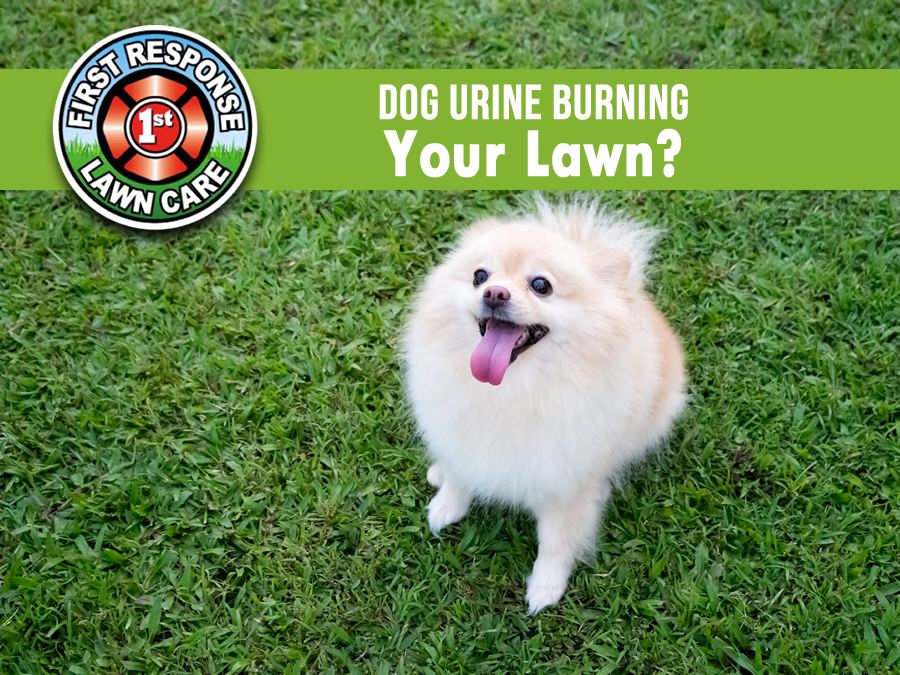
by admin | Jul 7, 2017 | Lawn Care 101, Lawn Care Royse City, Lawn Maintenance Rockwall, Pet Urine Damage on Lawn
We love our dogs. What we do not love is the side effect of dog urine on our lawns. You know what we mean – those unsightly brown “burn” spots on the lawn. They make the yard unsightly and seem impossible to get rid of. And if like us, you have multiple dogs, you can quickly find yourself with a dead lawn.
How can dog urine turn your lawn brown?
Because dogs eat a high level of protein in their diet, they break the protein down and excrete it as nitrogen in their urine. The result unfortunately, can kill your lawn. You will get the same kind of burn if you put a concentrated handful of fertilizer in one spot. However, it’s interesting to note that not all dog’s urine does this, which is a mystery.
Is there anything you can do to protect your lawn from dog urine?
Here’s some advice on what pet owners can do to protect their lawn and keep their pet healthy and happy.
- Use a leash to control where your dog urinates.
- Water the lawn right after your dog urinates to dilute the nitrogen on the grass.
- Dilute your dog’s urine by encouraging them to drink more water.
- Try a different high quality dog food. Do not switch your dog’s food to a low quality, low protein food just to save your lawn. There are other ways that will not compromise your dog’s health.
- Do not put fertilizer on your burned lawn to try and bring it back. Fertilizer’s are also high in nitrogen, so you will just speed up the killing.
There is no real way to remove the spots once they are there. In fact, as mentioned above, trying to use a fertilizer to get your grass to grow back will actually make it worse. It is best to just wait until the grass comes back on its own.

by admin | Jun 30, 2017 | Lawn Care Royse City, Lawn Mowing Rockwall
Affordable Lawn Mowing Service Rockwall
We make lawn mowing so easy. No hassle. $28 lawn mowing. All you have to do is pick up the phone and call us at (214) 701-7622. We take pride in the quality of our work, and always strive for complete customer satisfaction. After all, your lawn is our reputation!
First Response Lawn Care provides landscape maintenance to homes and businesses of all sizes. We do one thing, and we do it well – we make your lawn look the best it can. All work is performed by our friendly, professional staff. Here’s what we promise to deliver –
• Clean, Neat, Well Cut Lawn Free of Debris and Clippings
• Reliable, Same Day Service Every Week + Fast Response But Not a Rush Job
• Conscientious – Gates Closed and Environmentally Friendly
Our mowing service includes mowing, trimming, edging, and blowing off all hard surfaces. The stuff that isn’t fun to do yourself. It’s hot out there, and it’s hard work. Our goal is to simplify your life and/or business tasks so you can concentrate on the things that matter most to you.
Lawn Mowing & Maintenance
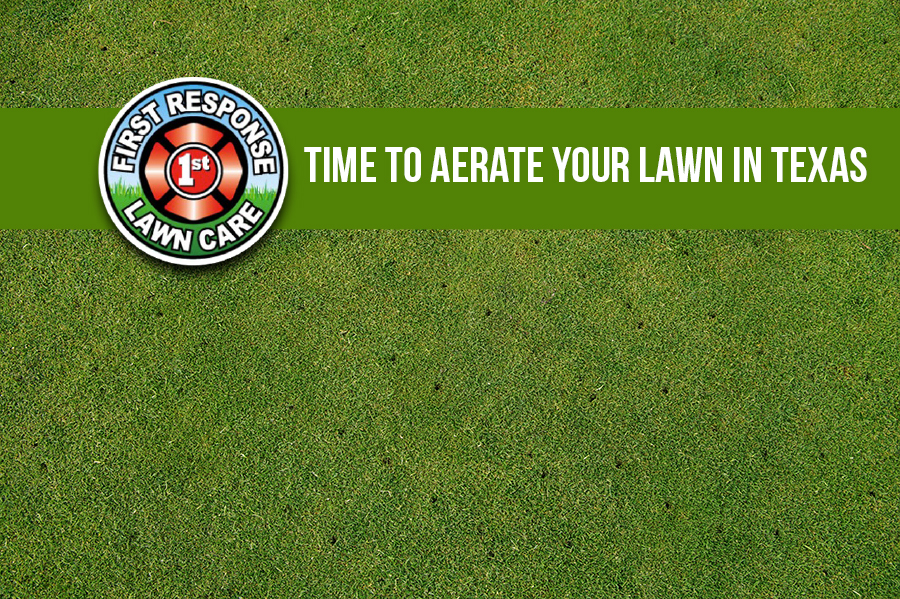
by admin | Jun 23, 2017 | Aeration, Lawn Aeration Rockwall, Lawn Care Royse City
For warm season grasses, like those you find in our great state of Texas, you should aerate in the early summer. Why? Because warm-season grasses begin their period of active growth in summer. If you aerate a warm-season lawn in late spring to early summer, the ensuing period of rapid growth will quickly fill in the holes you create. If you have Bahia grass, Bermuda, Buffalo grass, Centipede grass, St. Augustine or Zoysia grass, you have a warm season grass.
Aeration Tips
• Follow up the aeration treatment with fertilizing or reseeding your lawn since aeration creates openings for nutrients and seed to penetrate soil.
• The process of aerating can spread weed seeds or portions of weedy roots. Be sure to control weeds prior to aerating.
• If you have a newly planted lawn, wait for at least one year to aerate. This time lapse will ensure that the grass is well established.
• Aerate when soil is moist, but never when it’s saturated. The tines of a lawn aerator penetrate moist soil more deeply; soil that’s too wet clogs tines and isn’t as effective. To achieve the correct moisture balance, your lawn should absorb 1 inch of water – delivered through rainfall or irrigation – prior to aerating. This may mean you’ll water for one hour one day prior to aerating or, if your soil is hard, for shorter times on several days prior to aerating.
• Avoid aerating during drought or high heat. You’ll stress the lawn by allowing heat to dry soil If you aerate in these conditions,
• Plugs should be left on the lawn following aeration, as they contain soil microorganisms that help to break down thatch. These plugs disappear in a short period of time when left on the surface of the lawn.
Call First Response Lawn Care today if you have questions about aerating your lawn. Our technicians are trained to aerate at the optimum time for your soil conditions, giving you the best-looking lawn in the neighborhood.
Lawn Aeration

